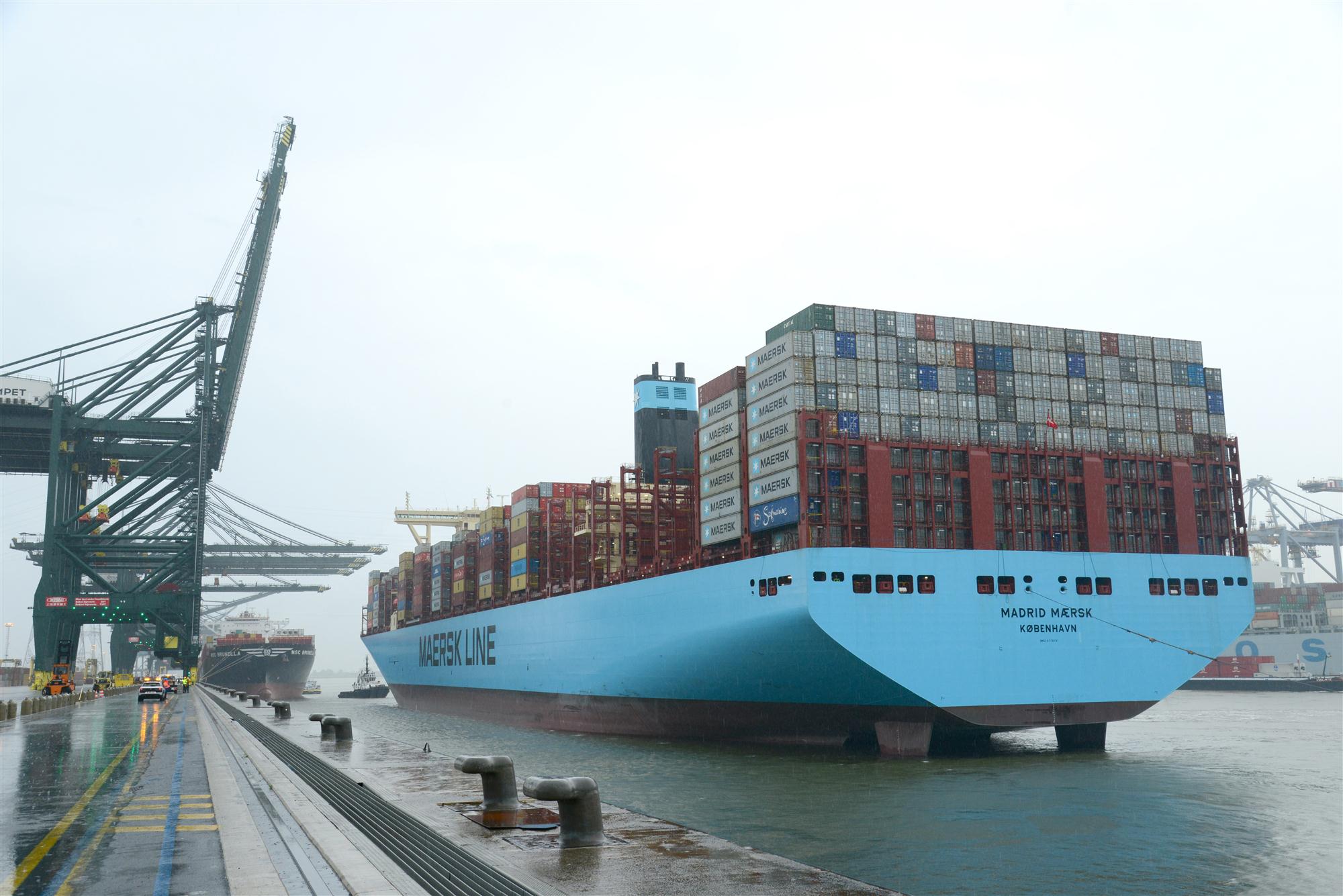The Port of Antwerp is looking to solidify its status as one of Europe’s top seaports through expansion and technological innovation.
For 2016, the port posted a total throughput of 10,037,318 TEUs, the first time it had surpassed 10 million TEUs, and in the first half of 2017, it handled 5.14 million TEUs, a 1.9% year-on-year growth.
“We are optimistic about the strong position of the Port of Antwerp,” says Luc Arnouts, chief commercial officer of the Port of Antwerp. “This has to do with what’s going on in the market. The bigger ships need to be filled. Over the last couple of years, those ports that are cargo-generating have been more successful. Antwerp is in a strong position because we have a strong local cargo-generating base and excellent connections to the hinterland.”
Antwerp sits approximately 90 kilometres inland on the Scheldt, which was deepened in 2010 to allow the port to accommodate ships of up to 16 metres in depth.
“That was crucial for us,” Arnouts says. “With that, we feel that nothing more is necessary for the moment in this regard. We think that this is where the shipping world will stand. Technically, even bigger ships are possible, but you need to find the cargo to fill them. It might be that besides the big shipping lines, we might see new niche players appear with smaller ships that are able to move faster for a premium price.”

In June 2017, the 20,568 TEU Madrid Maersk became the largest container vessel to be handled by the port when it arrived at the Deurganck dock. According to Arnouts, even though the port and its terminals have made the necessary investments and are ready for ships of this size to start making more regular appearances, the total cost needs to be taken into account when considering whether it is always wise to continue increasing ship sizes.
“This is hopefully an improvement for the carriers and I hope the terminal operators get a good return on their investment in the big cranes, but then there is a burden on the transport to the hinterland,” he says. “We should not close our eyes to the impact of peaks where thousands of containers arrive at the same time to be brought inland. This is also a cost and usually this is paid for by the taxpayer through investments in roads and rail. In that respect, we need to find a balance, because it cannot be that the bigger ships only lead to advantages for the carriers or the shippers. That’s why I think we’re kind of at the limit with 21-22,000 TEUs.”
While the Port of Antwerp currently has seven container terminals spread over three main areas, one of the top priorities is to obtain additional capacity for container handling.
“We’re looking at further expansion because we will need more capacity by 2021-2022,” Arnouts says. “Together with the Flemish government, we’re looking at different alternatives. The big project for this year is to come to a solution as to which alternative is the best. We hope to have a decision by the end of the year.”
Apart from the need for extra capacity, the port’s strong growth over the last few years has also resulted in a large amount of road traffic in and around the port area.
“Our challenge is to shift away from trucking and to get as much as possible onto the barges and onto rail,” says Arnouts. “Rail for us right now is only about 8%. The target is to go to 15%. Barge is 32% and we want to bring that to 42%, but that is not as challenging.”
The Port of Antwerp is part of chainPORT, an initiative launched in 2016 consisting of major global port authorities such as Hamburg, Los Angeles, Shenzhen, Busan and Singapore that conduct regular meetings on how to take advantage of technological developments.
“I love the openness that I have discovered on the level of the port authorities,” Arnouts says. “One of the things that we discuss is innovation and what we can learn from each other. We have actually created a working group specifically for innovation and we have a phone call about once a month.”
One of the key areas which the group hopes to improve is communication with customers. In particular, the group is looking at the best ways to provide and share real-time information about a ship as it approaches a port, saving time and costs. Arnouts says he think it’s interesting that there is a growing openness to sharing in what used to be a very protectionist sector.
“Of course, overall there has been a lot of technological evolution from the beginning, but it is a rather conservative world of moving goods from A to B, with a lot of intermediary functions and each defending their own part in the logistical chain,” he says. “We need to look for models where we work with more stakeholders and question the role of some intermediaries. If they do not add value, it does not make sense to continue to try to keep them, which is what we have been doing.”
From the chainPORT discussions, Arnouts says that he’s optimistic because he can feel that the sector is really moving forward to be more mature and more receptive to innovation.
“If we don’t stay awake, then the Alibabas and the Amazons will just organize their own supply chain, so it’s important that the players adapt to what the customer today wants,” he says. “Then the Alibabas and the Amazons aren’t a danger but an opportunity.”
By Jeffrey Lee
Asia Cargo News | Munich